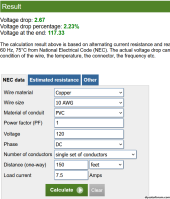adamarthurryan
New Member
Hi, I'm currently building and living in a tiny off-grid cabin. I use a small amount of electricity for charging battery-powered tools and running a few corded tools like a grinder and circular saw.
My battery is a 48V 20Ah lifepo4 in a waterproof case (I use it to power my electric boat motor as well) and I have a 1500W inverter to generate 120V AC.
For charging I have 2@ 100W panels and a Renology Rover Boost solar charger.
The thing is that my cabin is in the woods and doesn't have a lot of solar potential. The roof is heavily shaded. So my solar panels are in a clearing about 300 feet away, with the inverter in a little trailer. I carry my battery there in the morning and let it charge for the afternoon while I'm out or whatever. So far I'm getting plenty of power for my daily needs. I charge up every other day or so.
But, the colder weather is coming and I'm aware that I won't be able to charge my battery at ambient temperatures in the winter.
One thought I had is to somehow transmit the power from my solar array back to the cabin. But how to do that? Obviously at 12V DC or whatever I'd need a huge cable. So I thought I could have an inverter with the solar array and just run a ~400 ft 12/3 exterior extension cord back to the cabin. But then how do I charge my battery? I'm not sure what I would do at that point...
Would I rectify the 120V from the solar panels back to 20V or whatever and feed it into the Rover Boost to charge my battery? And at the same time have my 48V -> 120V inverter hooked up to the battery to power my house loads?
Is that a thing at all? Or is there a whole other approach I should consider? Eg. getting some sort of heater for my battery and continuing to charge it in the field?
Thanks for your thoughts!
My battery is a 48V 20Ah lifepo4 in a waterproof case (I use it to power my electric boat motor as well) and I have a 1500W inverter to generate 120V AC.
For charging I have 2@ 100W panels and a Renology Rover Boost solar charger.
The thing is that my cabin is in the woods and doesn't have a lot of solar potential. The roof is heavily shaded. So my solar panels are in a clearing about 300 feet away, with the inverter in a little trailer. I carry my battery there in the morning and let it charge for the afternoon while I'm out or whatever. So far I'm getting plenty of power for my daily needs. I charge up every other day or so.
But, the colder weather is coming and I'm aware that I won't be able to charge my battery at ambient temperatures in the winter.
One thought I had is to somehow transmit the power from my solar array back to the cabin. But how to do that? Obviously at 12V DC or whatever I'd need a huge cable. So I thought I could have an inverter with the solar array and just run a ~400 ft 12/3 exterior extension cord back to the cabin. But then how do I charge my battery? I'm not sure what I would do at that point...
Would I rectify the 120V from the solar panels back to 20V or whatever and feed it into the Rover Boost to charge my battery? And at the same time have my 48V -> 120V inverter hooked up to the battery to power my house loads?
Is that a thing at all? Or is there a whole other approach I should consider? Eg. getting some sort of heater for my battery and continuing to charge it in the field?
Thanks for your thoughts!



